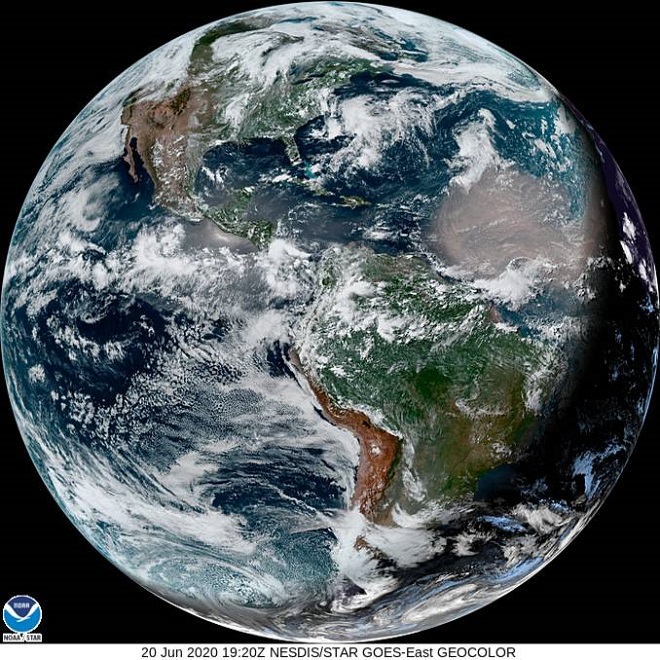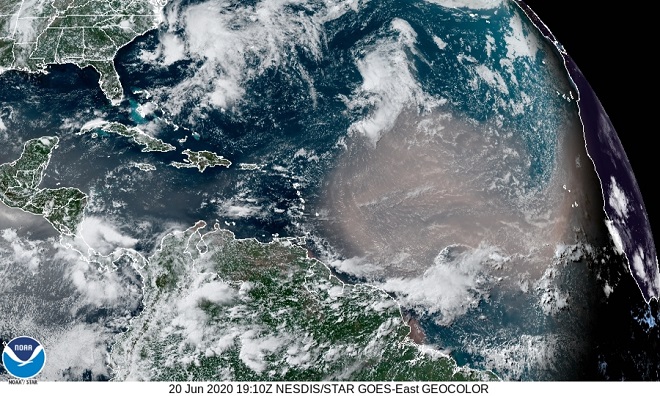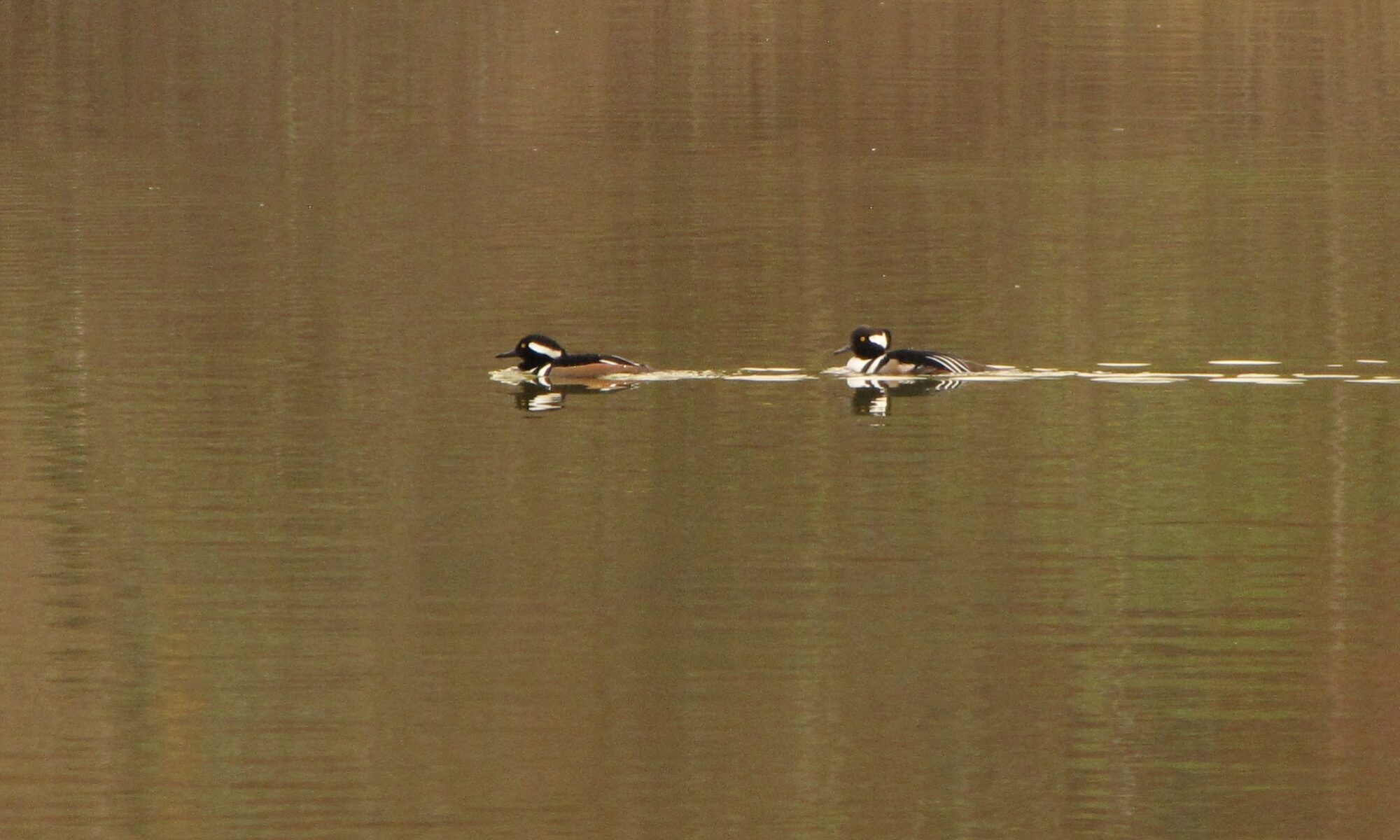Summer is nigh upon us. With the solstice just hours away, it might be fun to have a look at a satellite view of the earth while the south pole lies plunged into days of endless night, and the north pole suffers none.

In the image above, darkness can be seen engulfing the southern Atlantic Ocean and southernmost Chile. The latter is the longitudinal equivalent of the lower Susquehanna valley. Today, it experiences nightfall more than five hours earlier than we, heralding the first day of our summer, and of their winter.
Just to the north of the South American continent, note the enormous tan-colored cloud over the Atlantic. What is that? From whence doth that cloud come?

Closer inspection reveals an enormous plume of dust rising from the Sahara Desert in Africa and drifting west approaching the Leeward Islands of the Caribbean. (In the image above, Africa can be seen outlined in the darkness along the east horizon) Look closely and you’ll notice that the dust is obscuring the white clouds below it, indicating that it has reached altitudes high in the atmosphere. Particle fallout from Saharan dust clouds is known to fertilize tropical forests—including the Amazon (bottom center of image). Because they are composed of wind blown particles and not water vapor, Saharan dust clouds carry aloft not only minerals and nutrients, but microscopic and macroscopic life too.
Is this particular Saharan dust cloud going to impact the Amazon? What might the meteorological and biological effects of this cloud be if it continues into the Caribbean and even into the United States? Might we be showered by little pieces of the Sahara this summer? Will we see spectacular sunrises and sunsets? Time will tell.
